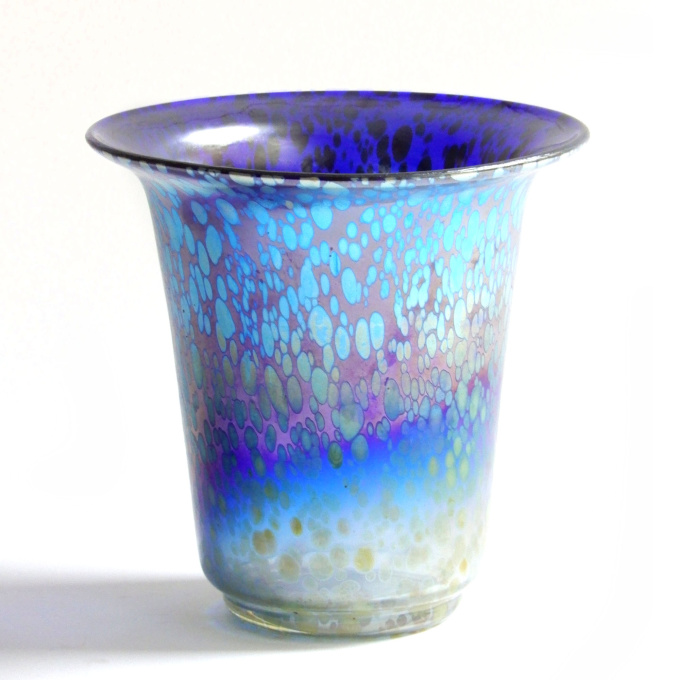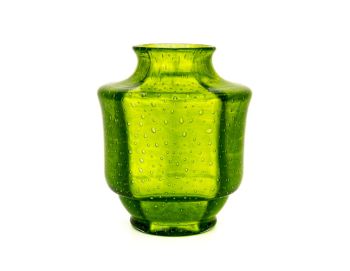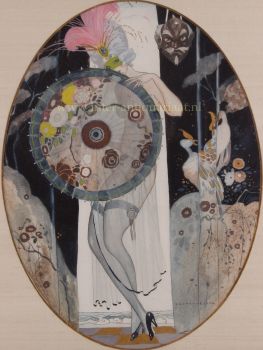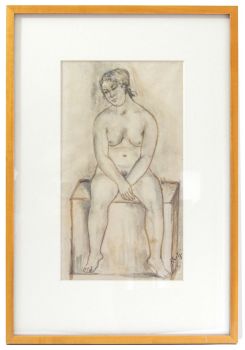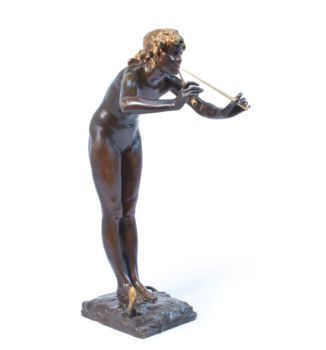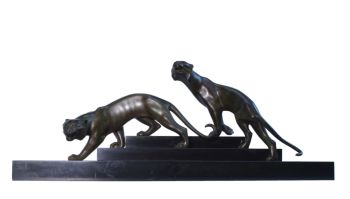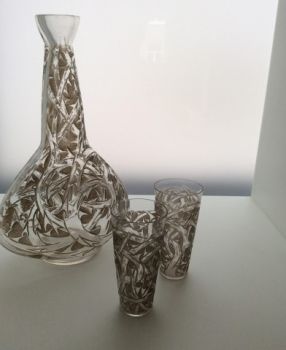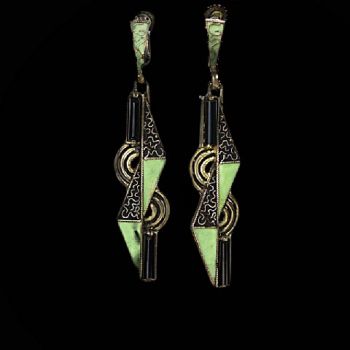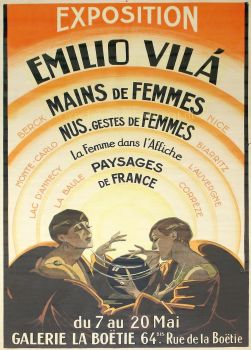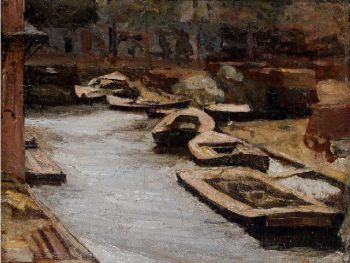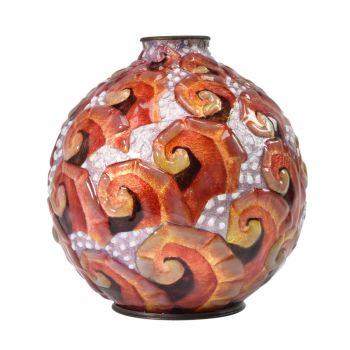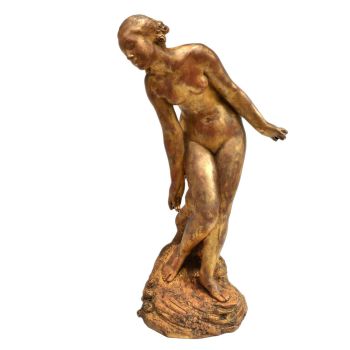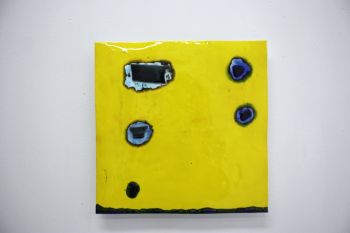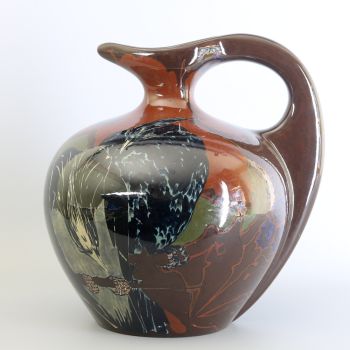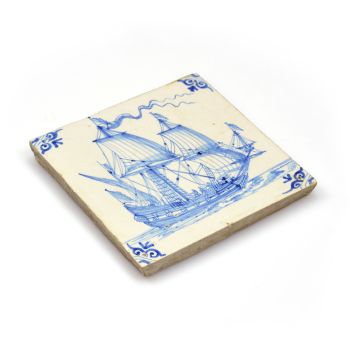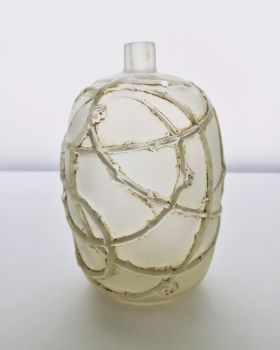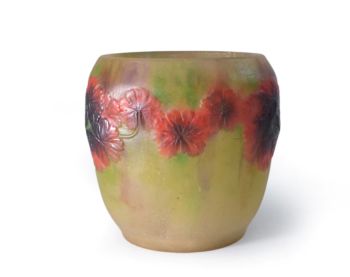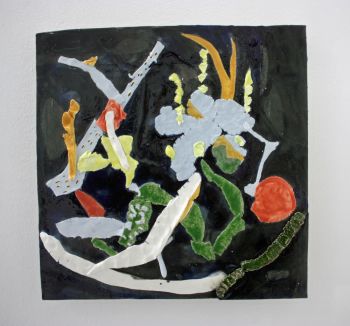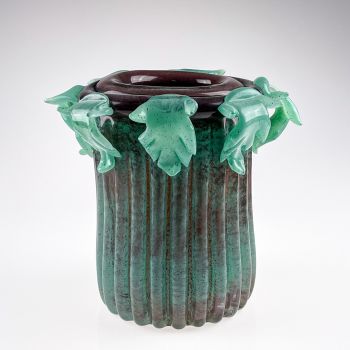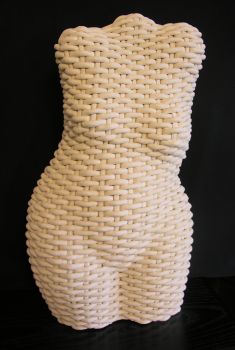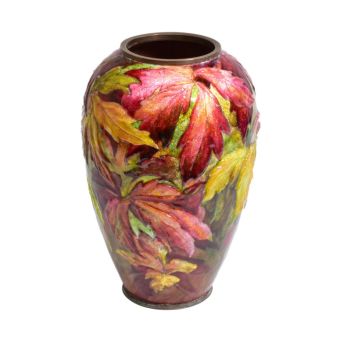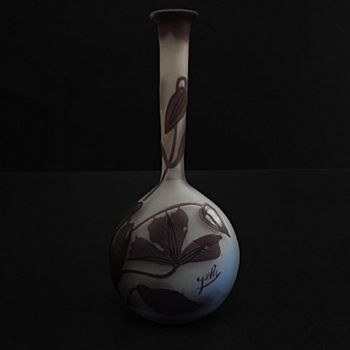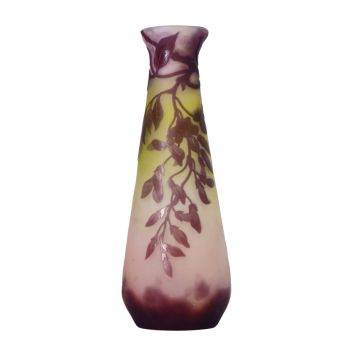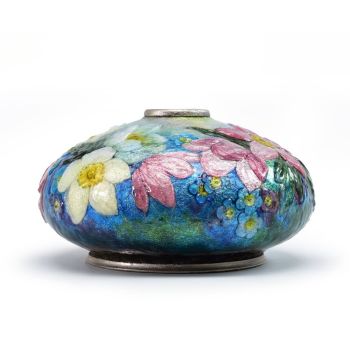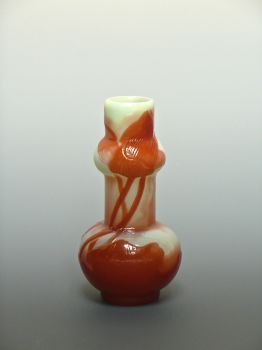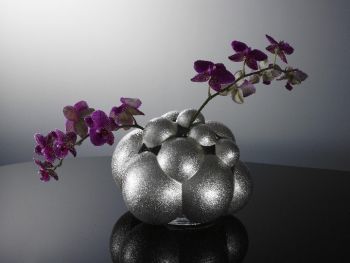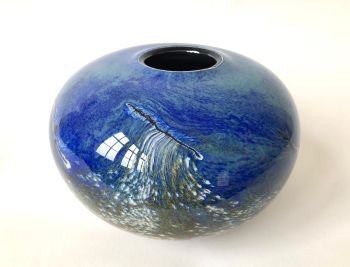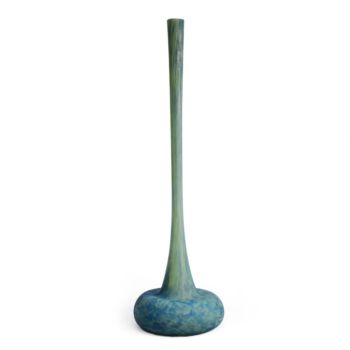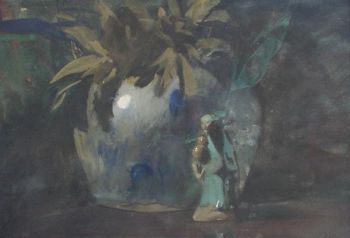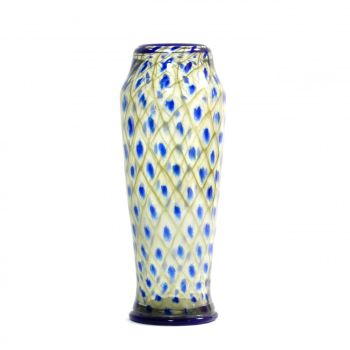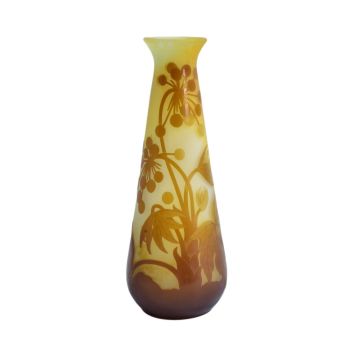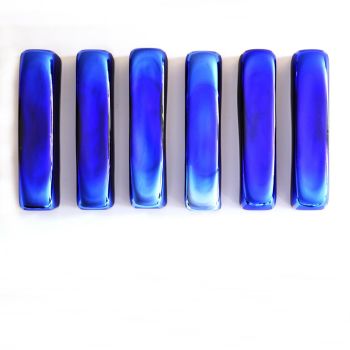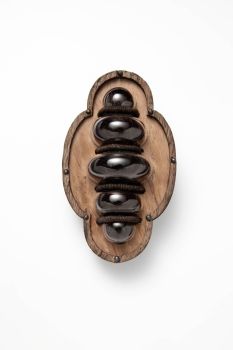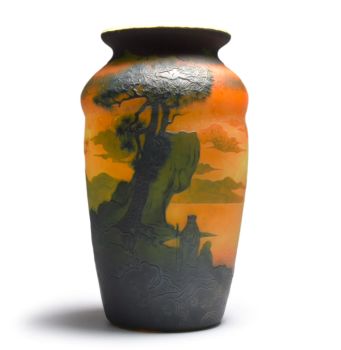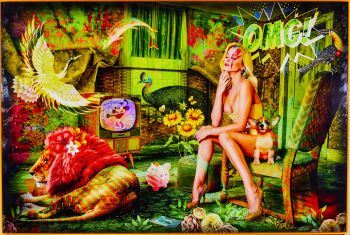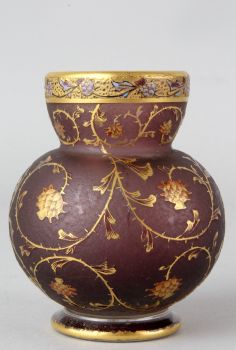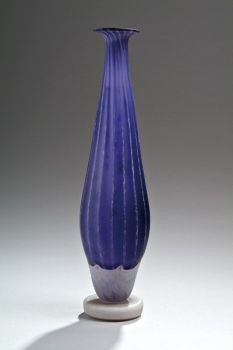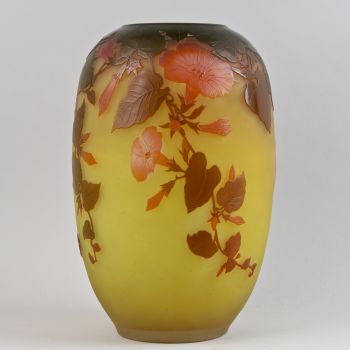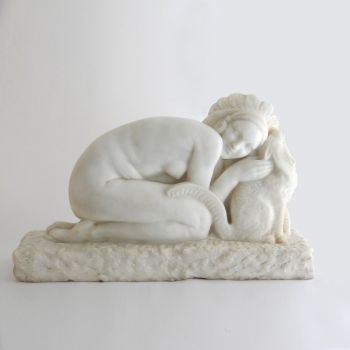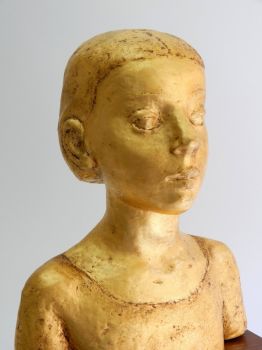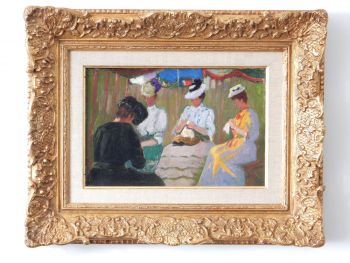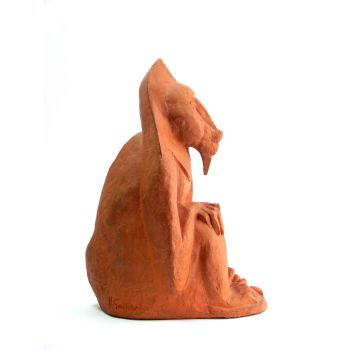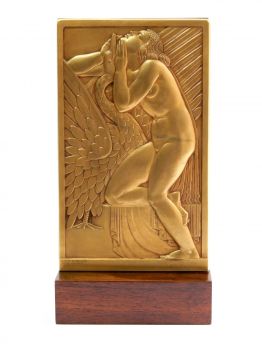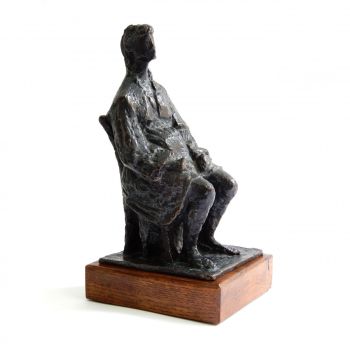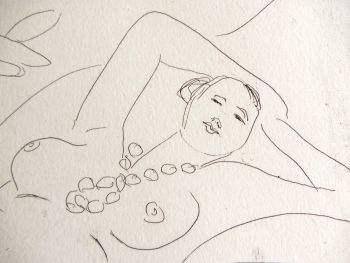Vase with papillon decor 1910 - 1920
Johann Loetz (Lötz) Witwe Klostermühle
Verre
13 cm, ø 13 cm
ConditionExcellent
Actuellement indisponible via Gallerease
Dille Art
- Sur l'oeuvre d'artBeautiful vase with intense colours. The vase has a flared neck and has a papillon decor in iridescent colours, from light to deep blue, soft green-yellow and violet. The vase is in excellent condition.
About Johann Lötz Witwe:
Lötz/Loetz was founded by Johann Lötz in 1840 and the company was located in Bohemia, in the Czech Republic, at the time Lötz belonged to the Austrian-Hungarian Empire.
In 1879 a grandson of Lötz, Max Ritter-Von Spaun, took over the business from his grandmother, he kept the name Joh. Lotz Witwe.
From that moment on, Johann Lötz Witwe really started to make a name for themselves, they developed new innovative glass techniques, but their design and the bright colours were also completely innovative. They designed special shapes and vases, high end items, which they sold in luxury stores in Vienna, Berlin, Hamburg, Paris, London, Milan, Brussels and Madrid. It soon made them very well known and famous.
It was the period when Art Nouveau or, as it was called in Germany, Jugendstil flourished. They used organic shapes, nature was their example, also for Lötz. They developed beautiful decors, resembling butterfly wings, such as the papillon decor of this vase, often the shapes were organically formed by unevenly shaping the hot glass with tongs, as also flowers are formed. But an octopus or sea shells were also used as examples for their special vases and decors.
Lötz took part in all kinds of World Exhibitions, including the famous 1900 World Exhibition in Paris where they won the grand prize. They have been awarded numerous prizes for participation in World Exhibitions. Max Ritter von Spaun also received special awards for his contribution to the glass industry. In 1883 he was allowed to use the Imperial eagle in their shield and seal, they were also allowed to put "K.K. Private Glass Factory" in front of their name. In 1889 he also received a knighthood from Franz Josef. But other royal houses also did not go unnoticed, he received the Belgian Leopold's order, and the honourable French Legion d'Honneur.
Their designs were loved, including in the United States. Lötz patented some of their special techniques, such as the one they used to make the Phänomen decor. They were able to make iridescent glass. In short, Lötz had become a household name. And it still is.
Lötz also worked closely with other glass manufacturers such as J.&L. Lobmeyer and E. Bakolowits Söhne in Vienna and with Argentor. In addition, Lötz worked closely with various artists, such as Josef Hoffmann, Koloman Moser, Franz Hofstötter, Michael Powolny and other artists of the Wiener Werkstätte. Michael Powolny was responsible for the more stylized tango vases from the 1920s.
The First World War and the end of the Austrian Empire marked a difficult period for Lötz.
Lötz existed until 1940, after a bombing raid the factory was completely burned down. After WWII, the Czech Republic belonged to the satellite states of the Soviet Union, the factory was nationalized, until it was finally closed in 1947.
Lötz glass is still very popular and is collected worldwide, their oeuvre can also be found in many museum collections.
Literature:
- Guiseppe Gappa; 'Le génie verrier de l'Europe', p. 95-107. Pierre Mardaga, Belgique, 1998, p. 95-107.
- Victor Arwas, 'Glass, Art Nouveau to Art Deco', p. 202-212. Academy Editions London 1987,
p. 202-212.
- 'Das Böhmische Glas 1700-1950', Passauer Glasmuseum, Georg Höltl, Passau 1995.
Band IV: Jugendstil in Böhmen, p. 16-133, afbeelding p.57, fig.IV.76.
- Victor Arwas, 'Glass, Art Nouveau to Art Deco', p 202-212. Academy Editions London, 1987. - Sur l'artiste
La verrerie Loetz a existé à Klostermuhle, en Autriche, pendant un peu plus de cent ans, à partir de 1840. Mais son apogée a eu lieu du vivant de Max Ritter Von Spaun, petit-fils du premier Johann Loetz qui avait fondé l'entreprise.
Von Spaun a repris l'entreprise en 1879 et l'a dirigée jusqu'en 1908, un an avant sa mort. Il est assisté d'Eduard Prochaska, son spécialiste technique, et ensemble ils inventent, conçoivent et produisent toute une série de merveilleux nouveaux types de verre, en déposant plusieurs brevets et en remportant des prix dans toutes les grandes expositions mondiales des années 1890 et des premières années de le nouveau siècle.
La société Loetz figurait parmi les leaders du design Art Nouveau et en particulier du verre d'art irisé. Le verre "Papillon", comme le vase de gauche, est parfois appelé aujourd'hui verre "à tache d'huile". Une autre coloration préférée de Loetz était le verre irisé avec des traînées tirées appelé verre « Phenomenon ».
Il y avait des vases irisés avec des rubans de couleurs métalliques enroulés sur la surface, et de nombreux motifs spectaculaires avec des traînées appliquées de belles couleurs, ou simplement retirés du corps du verre pour former des poignées ou une décoration.
Vers 1900, la société a commencé à collaborer avec des designers extérieurs et de grands artistes ont conçu des pièces pour Lotz, notamment Joseph Hofmann, Koloman Moser, Maria Kirchner et Hofstatter.
En 1908, Loetz a été repris par le fils de Max Von Spaun, également appelé Max, et bien qu'il ait connu des difficultés financières (faillite en 1911 et à nouveau en 1931), il y avait plusieurs grands designers dont le travail a été produit par Loetz au cours de ces années et à travers l'art période déco. Ceux-ci comprenaient Adolf Beckert et Michael Powolny.
Êtes-vous intéressé par l'achat de cette oeuvre?
Artwork details
Related artworks
Johann Loetz (Lötz) Witwe Klostermühle
Johann Loetz Witwe - Phänomen Genre 7773 – Orange1900 - 1910
Prix sur demandeAntiques Emporium
Johann Loetz (Lötz) Witwe Klostermühle
Johann Loetz Witwe – Jugendstil Cobalt Papillon vaas1900 - 1910
Prix sur demandeAntiques Emporium
1 - 4 / 8Gabriel Argy-Rousseau
Gabriël Argy-Rousseau – Crabes et Algues vase – 19201920 - 1929
Prix sur demandeAntiques Emporium
1 - 4 / 24Artiste Inconnu
Series of 6 Chinese cups and saucers (Yongzheng period)1722 - 1735
Prix sur demandeKuipers Kunst & Antiek
1 - 4 / 24Gabriel Argy-Rousseau
Gabriël Argy-Rousseau – Crabes et Algues vase – 19201920 - 1929
Prix sur demandeAntiques Emporium
Johann Loetz (Lötz) Witwe Klostermühle
Johann Loetz Witwe – Jugendstil Cobalt Papillon vaas1900 - 1910
Prix sur demandeAntiques Emporium
Jan Voerman sr
Still Life with flowers in a Chinese figurine1850 - 1900
Prix sur demandeKunsthandel Pygmalion
1 - 4 / 24Artiste Inconnu
Un rare filigrane un gobelet retortoli1550 - 1600
Prix sur demandePeter Korf de Gidts - Antiquairs
Amalric Walter
Amalric Walter & Henri Bergé – Crabe plumier1920 - 1929
Prix sur demandeAntiques Emporium
1 - 4 / 24- 1 - 4 / 12

